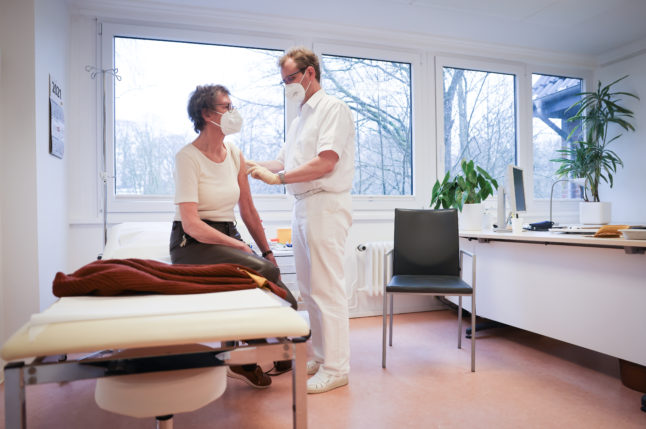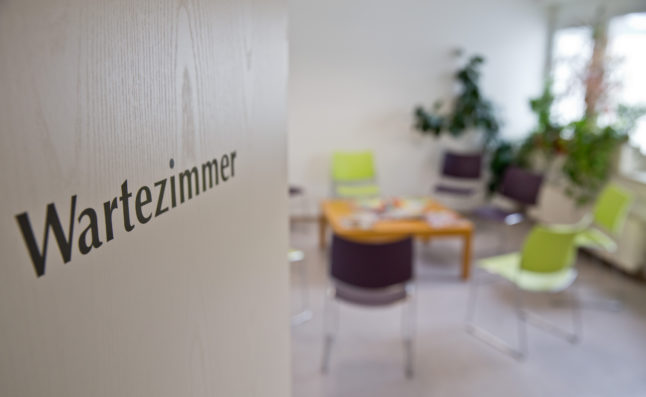Germany is known for having one of the best healthcare systems in the world.
But there are some cultural differences that can take a bit of getting used to when you’re not from the country.
Here’s a look at what you should keep in mind.
You might have to pay at the doctor
People used to a healthcare system that’s free at the point of contact, such as the NHS in the UK, may be a little confused if they are asked to pay money at a doctor’s appointment.
But the fact is that certain things will not be covered by your health insurance in Germany, and some optional extras could require that you have to dip into your wallet.
For instance, many gynaecologists may offer to carry out an optional pelvic ultrasound check during a Pap smear test. If it’s not covered by your insurance, they will state in the appointment that it is an extra cost so you can decide if you want to pay for it or not.
You should also ask if you have to pay for it upfront at the practice or if it will be sent out as a bill.
Similarly, other specialists may also offer extra services that you could pay extra for.
READ ALSO: ‘It works’: Your verdict on the German healthcare system
You’ll get different types of prescriptions
Another point to watch out for is that there are different kinds of prescriptions. A prescription (Rezept) given out on pink slips is usually given to people on statutory health insurance. People have to pay a reduced contribution – usually around €5-€10 – when picking up prescription medicine at the pharmacy.
Patients with private insurance in Germany are more likely to be given a blue-coloured prescription slip. Private customers have to pay for their medicines in full before their insurance company reimburses them. You can also be given a blue slip if your public health insurance doesn’t cover the treatment.
Green slips include treatment that the doctor recommends. Meanwhile, yellow prescriptions are issued by the doctor for special controlled substances and are only valid for seven days.
Polite waiting room etiquette
Germans may not be well known for being super friendly. But there are a few unexpected spots which are very welcoming. And one of those places is the doctor’s waiting room.
Yes, it can be very surprising for foreigners when they are greeted with a little “Guten Morgen!” or “hallo!” in the waiting room when someone arrives. It’s customary for patients to give a polite hello and goodbye in the waiting room.

… But you may face a stern receptionist or doctor
Ask a group of international residents about their experience of going to the doctor in Germany – or indeed other German-speaking countries – and you will likely hear about how the bedside manner is “different”.
This is because some doctors, and even receptionists, have a stern and direct approach when dealing with patients, which can be intimidating for newcomers to the country.
It can also be a little weird if you have to take some clothes off for an examination. You probably won’t be handed a gown, towel or even asked to undress behind a curtain. Everything is out in the open in Germany!
Don’t worry though – none of this is personal. It’s just a different way of doing things.
If you do come across a grumpy doctor, the best way to handle it is to either accept it or find a different doctor.
Be prepared to wait
Most Hausarzt (GP) practices in Germany operate on a drop-in basis during set times, known as Sprechstunden (consultation hours).
This means you can simply pop in during a two or three-hour window. During these times, it’s also first-come, first-served.
The advantage of this system is that it’s possible to see a doctor, for example, on a Wednesday morning without an appointment, as long as you have time to wait.
But if you are in a rush, or have a strict schedule, then the drop-in approach can be time-consuming. Depending on when you arrive, it could mean a short wait of several minutes or up to an hour.
The best advice is to arrive just as the doors open to secure a place near the top of the queue.
You can also book an appointment or Termin. But even if you book, you’ll probably still face a wait of at least 15 minutes.
You are usually referred to a specialist
In Germany, if you are covered by public health insurance, you usually have to visit a GP to be referred to a specialist doctor.
There are exceptions in some cases, such as for gynaecologists and ophthalmologists where you can make an appointment without a referral.
If you have private insurance you can book appointments with specialists more easily.
READ ALSO: How to get a faster appointment with a specialist in Germany
Visit (or call) a GP for a sick note
If you’re sick from work then you have to get a sick note – Arbeitsunfähigkeitsbescheinigung or Krankschreibung – after three days of illness to give to your employer. Some bosses may require this sick note earlier, so check your contract or ask HR.
Generally, you have to visit your doctor to get this document. But during the pandemic, people have been able to get a sick note over the phone from their GP for mild respiratory illnesses, including Covid-19.
READ ALSO: The 10 rules you need to know if you fall ill in Germany




 Please whitelist us to continue reading.
Please whitelist us to continue reading.
Member comments